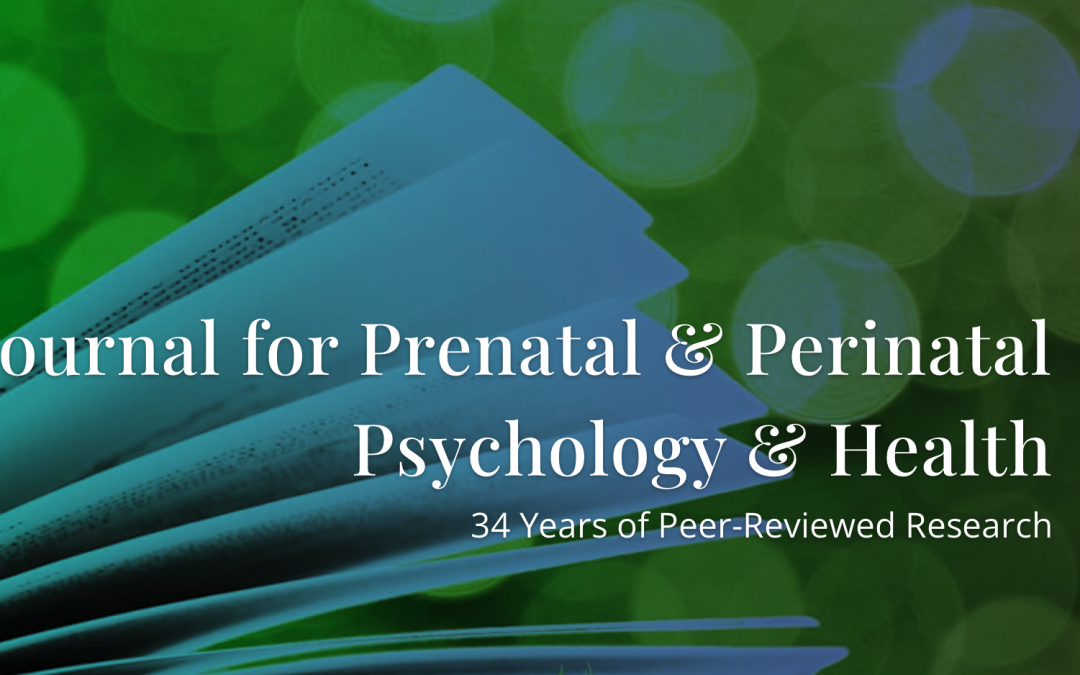Welcome to JOPPPAH’s second issue of 2022 and my first issue as Editor in Chief. It is an honor to take the reins from Dr. Stephanie Dueger and to continue in her steady footsteps by welcoming inclusivity, rigorous research, and expanded viewpoints for JOPPPAH and its readers. Learning beside Dr. Dueger for the last year was the ultimate privilege. As the old Irish saying goes, may the road rise up to meet you and may the wind always be at your back. We wish you well, Steph.
I am humbled to head up our intelligent, compassionate, and inquisitive team at JOPPPAH. I look forward to producing quality work for APPPAH and its global community, keeping in mind and heart JOPPPAH’s goal: to provide a space for researchers to explore the cutting edge of science on pregnancy, gestational parenthood, and infancy.
This end-of-summer issue we bring to your door contains four exciting articles from Australia to the Southeastern United States, Northern Italy, and Northern California that complicate, clarify, and provoke questions in our field of pre and perinatal psychology and health. The first three research articles work towards filling the gaps in our field by workshopping ideas to identify and intervene with antenatal and postnatal mental health issues. The last study explores early 21st century research on gestational parent-infant bonding and asthma. All four studies are calls to action for clinicians and researchers to fine-tune their diagnostic criteria and provide sound intervention for gestational parents and their babies.
From Australia, Jenna Mayhew and Dr. Matt Thomas present “Towards Developing a Predictive Model Explaining Postnatal Anxiety” to fill the gap in research on postnatal anxiety and offer a call to action: prenatal anxiety may be predictive of postnatal anxiety and requires more longitudinal studies with broader populations for generalizability. Mayhew and Thomas contend that though there is a wealth of data and research on postnatal depression, there are limited tools for screening
2 Journal for Prenatal and Perinatal Psychology and Health
identifying, and predicting postanal anxiety—even though it may be more prevalent than postnatal depression. Mayhew and Thomas utilized the Edinburgh Postnatal Depression Scale (EPDS) and the Antenatal (Psychosocial) Risk Questionnaire (ANRQ) for their longitudinal study, which incorporated 240 participants in the final research sample.
The second article takes us to Southeastern United States, where Dr. Tiffany Hopkins and Samantha Hellberg explore the effectiveness of prolonged exposure (PE) for eight participants who presented clinically with Postpartum PTSD (P-PTSD) in “Assessing and Treating PTSD from Obstetrical and Neonatal Traumas: A Case Series.” Hopkins and Hellberg identify common symptoms of P-PTSD, substantiate their use of PE, and outline how PE can be used to help address trauma. The researchers advocate for diagnosing P-PTSD as the first step in intervention. As such, they thoroughly outline how to recognize P-PTSD as a clinician. Hopkins and Hellberg also found that PE may be an effective treatment for P- PTSD. Similar to Jenna Mayhew and Dr. Matt Thomas’s research on postnatal anxiety, Hopkins and Hellberg call for large-scale evaluations for generalizability.
The third article of our second issue explores research from Northern Italy, where Pietro Madera, Dr. Sebastiana Zanetti, Dr. Francesca Dal Maso, Gloria Mssironi, and Dr. Francesca Lilliu employ a case-control study to investigate the correlation between gestational parents’ educational levels and postpartum depression during the Covid-19 pandemic in “How Education Level Affects Risk of Post-Partum Depression: A Comparison Before and During Covid-19.” In line with Mayhew and Thomas, the researchers used the EDPS to screen 605 patients before and 295 patients after the onset of the Covid-19 pandemic. The researchers concluded that higher levels of education might act as a “protective factor” during pregnancy and postpartum. In contrast, lower levels of education during the Covid-19 pandemic may have constituted an added risk factor for new parents. Similar to the two previous articles, the researchers call for broader studies for generalizable results.
Our fourth article, “Pediatric Asthma and Bonding,” by Dr. Antonio Madrid, Nicholas Bennett, and Peter Kingsford Petley, revisits research on the possible correlation between disrupted bonding between the gestational parent and infant and the onset of pediatric asthma. Employing data from a 2000’s era pilot study, the researchers suggest that bonding therapy could help alleviate pediatric asthma.
Editorial 3
Thank you for your continuing support of APPPAH and our journal. We welcome your comments, questions, and new research articles at [email protected]. We hope this end-of-summer issue facilitates new ideas, angles, and approaches for helping understand, assess, and help birthing families. We wish you and your loved ones a smooth transition into fall and beyond.
Kate Stahl-Kovell, PhD, MA JOPPPAH Editor-in-Chief


